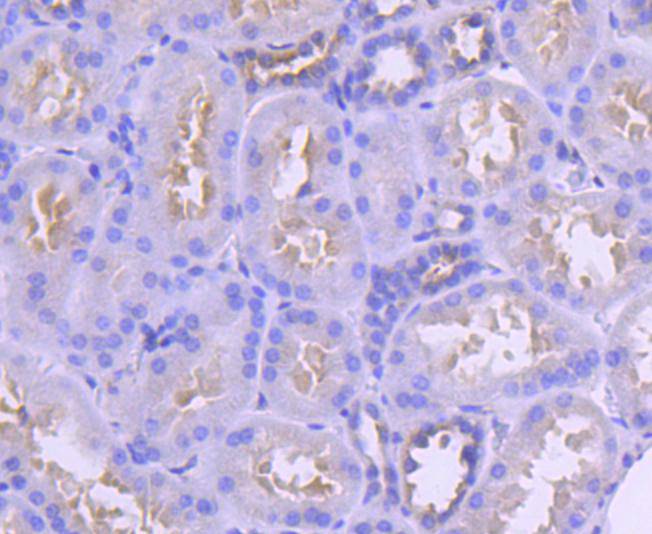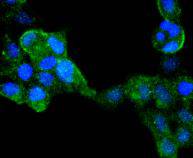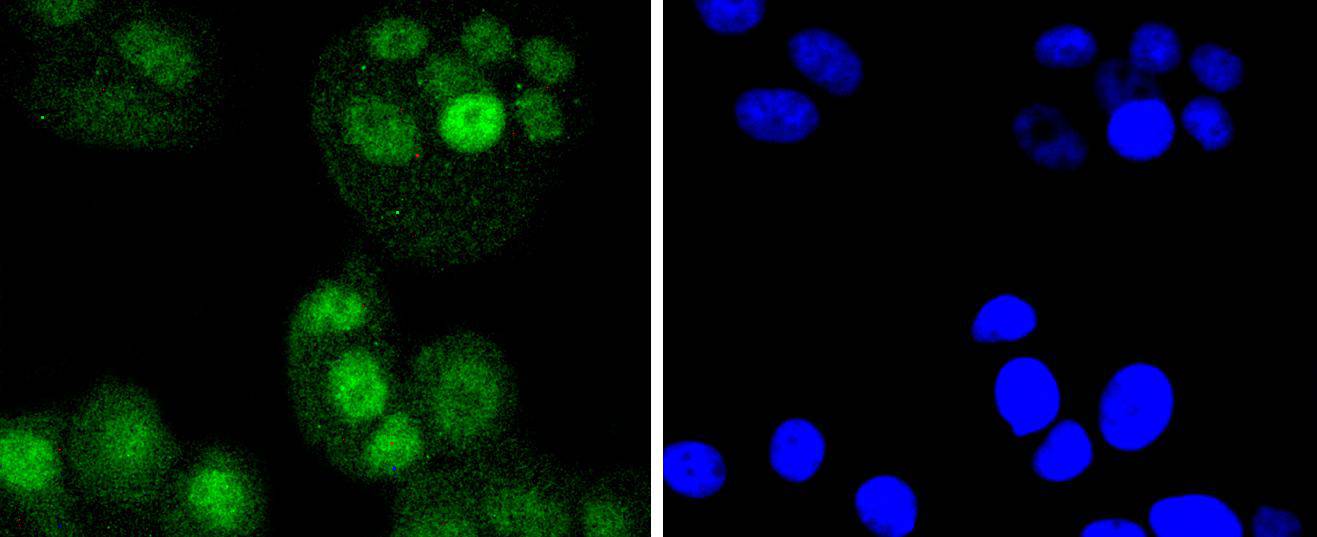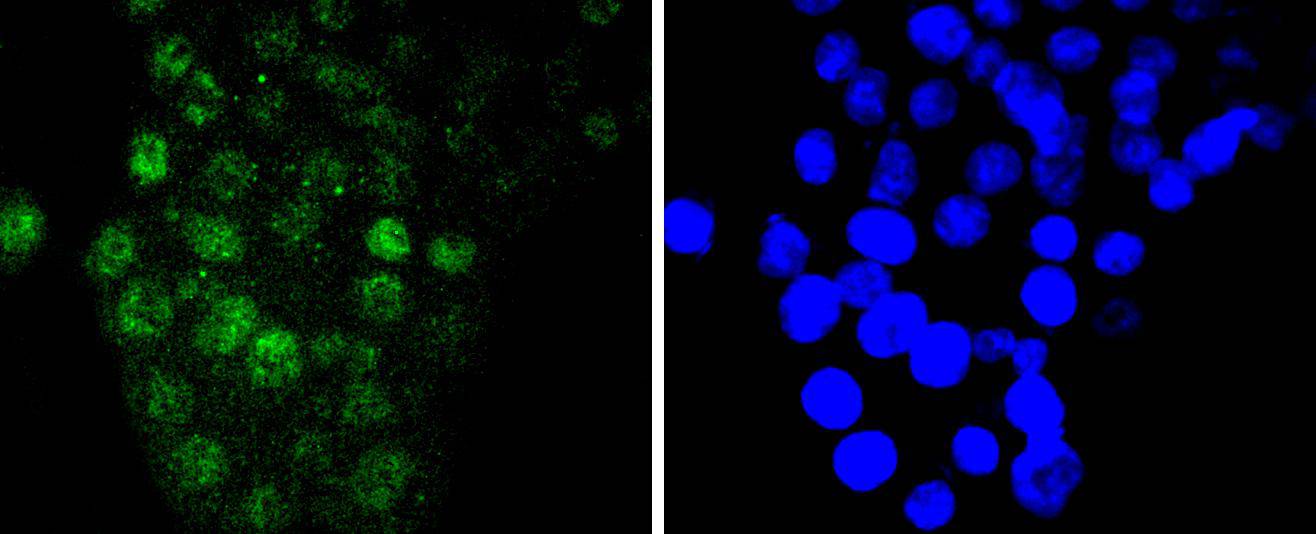Product Detail
Product NameIRF6 Rabbit mAb
Clone No.SD202-6
Host SpeciesRecombinant Rabbit
Clonality Monoclonal
PurificationProA affinity purified
ApplicationsWB, ICC/IF, IHC
Species ReactivityHu, Ms, Rt
Immunogen Descrecombinant protein
ConjugateUnconjugated
Other NamesInterferon regulatory factor 6 antibody IRF 6 antibody IRF-6 antibody IRF6 antibody IRF6_HUMAN antibody LPS antibody OFC 6 antibody OFC6 antibody OTTHUMP00000034677 antibody OTTHUMP00000034678 antibody PIT antibody PPS antibody PPS1 antibody VWS antibody VWS1 antibody
Accession NoSwiss-Prot#:O14896
Uniprot
O14896
Gene ID
3664;
Calculated MW60 kDa
Formulation1*TBS (pH7.4), 1%BSA, 40%Glycerol. Preservative: 0.05% Sodium Azide.
StorageStore at -20˚C
Application Details
WB: 1:1,000-1:2,000
IHC: 1:50-1:200
ICC: 1:50-1:200
Western blot analysis of IRF6 on K562 cells lysates using anti-IRF6 antibody at 1/1,000 dilution.
Immunohistochemical analysis of paraffin-embedded mouse kidney tissue using anti-IRF6 antibody. Counter stained with hematoxylin.
Immunohistochemical analysis of paraffin-embedded human kidney tissue using anti-IRF6 antibody. Counter stained with hematoxylin.
ICC staining IRF6 in 293 cells (green). The nuclear counter stain is DAPI (blue). Cells were fixed in paraformaldehyde, permeabilised with 0.25% Triton X100/PBS.
ICC staining IRF6 in MCF-7 cells (green). The nuclear counter stain is DAPI (blue). Cells were fixed in paraformaldehyde, permeabilised with 0.25% Triton X100/PBS.
ICC staining IRF6 in SW480 cells (green). The nuclear counter stain is DAPI (blue). Cells were fixed in paraformaldehyde, permeabilised with 0.25% Triton X100/PBS.
Interferon regulatory factor-1 (IRF-1) and IRF-2 have been identified as novel DNA-binding factors that function as regulators of both type I interferon (interferon-α and β) and interferon-inducible genes. The two factors are structurally related, particularly in their N-terminal regions, which confer DNA binding specificity. In addition, both bind to the same sequence within the promoters of interferon-α and interferon-β genes. IRF-1 functions as an activator of interferon transcription, while IRF-2 binds to the same cis elements and represses IRF-1 action. IRF-1 and IRF-2 have been reported to act in a mutually antagonistic manner in regulating cell growth; overexpression of the repressor IRF-2 leads to cell transformation while concomitant overexpression of IRF-1 causes reversion. IRF-1 and IRF-2 are members of a larger family of DNA binding proteins that includes IRF-3, IRF-4, IRF-5, IRF-6, IRF-7, ISGF-3γ p48 and IFN consensus sequence-binding protein (ICSBP).
If you have published an article using product 49146, please notify us so that we can cite your literature.








 Yes
Yes



